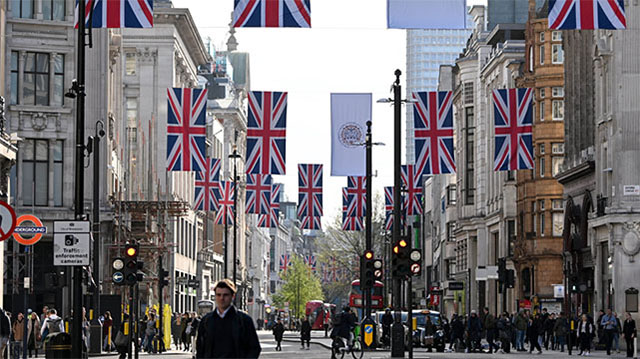Compulsory purchase – Compensation – Land Compensation Act 1961 – Acquiring authority purchasing reference land at auction in order to relocate town centre livestock market and develop town centre site for supermarket – Authority later acquiring claimant’s shooting rights over reference land pursuant to compulsory purchase order – Assessment of compensation under r 2 of section 5 of 1961 Act – Open market value of shooting rights – Whether rights having premium value as key to development – Whether such value to be disregarded under Pointe Gourde principle as being wholly attributable to authority’s scheme – Preliminary issue determined in favour of authority
By a compulsory purchase order made in August 2011 and confirmed in July 2012, the acquiring authority authorised the compulsory purchase of the claimant’s shooting rights over two fields in Raglan, Monmouthshire (the reference land), to facilitate a scheme of redevelopment in the town centre of Abergavenny. The scheme involved the demolition of the town’s livestock market and the construction of a new supermarket and a public library in its place, with the livestock market to be relocated to the reference land. The shooting rights vested in the authority in March 2013 pursuant to a general vesting declaration. The authority had acquired the reference land itself at a public auction in 2006.
The claimant claimed compensation for the value of the shooting rights, injurious affection to his retained land and disturbance and other losses caused by the compulsory purchase of the rights. The rights fell to be valued under r 2 of section 5 of the Land Compensation Act 1961, by reference to the amount that they might be expected to realise if sold on the open market by a willing seller, and the valuation date for that purpose was agreed to be March 2013. However, the parties differed significantly on the issue of valuation.14
The acquiring authority valued the shooting rights at £1,000. The claimant did not contend that their intrinsic value was significantly greater but nonetheless sought compensation of more than £5.649m to reflect a premium value of the rights as the key to the relocation of the livestock market and the development of its former site for the supermarket.
The authority contended that, as a matter of law, any premium value had to be disregarded by reference to the “Pointe Gourde principle”, under which, in valuing land that was compulsorily acquired, it was necessary to disregard any increase or decrease in the value of the land wholly attributable to the scheme of the acquiring authority. The claimant argued that the premium value was not attributable to the authority’s scheme since, even if the authority had not acquired the reference land and the shooting rights, the land would still have been acquired for the same purpose by a private developer. A preliminary issue was tried to determine that question.
Held: The preliminary issue was determined in favour of the acquiring authority.
The guiding principle when assessing compensation was that dispossessed owners should receive fair compensation but not more than fair compensation. The assessment of compensation was a statutory exercise, which, in this case, was to be conducted in accordance with r 2 of section 5 of the 1961 Act. Since none of the statutory assumptions in section 6 or Schedule 1 applied, the tribunal’s task would simply be to ascertain the amount that the claimant’s shooting rights would have been expected to realise if sold on the open market by a willing seller in March 2013. While that would require the making of assumptions, contrary to the true facts, that the rights were offered for sale in the open market on that date by a willing seller and that a sale was achieved, the statute did not require the making of any other counter-factual assumptions.
If the claimant’s rights had an enhanced value greater than their intrinsic value as shooting rights, then the claimant was entitled to compensation reflecting that enhancement, unless the enhancement was attributable solely to the authority’s scheme for the construction of a new livestock market and redevelopment of the site of the existing market, such that it fell to be disregarded under the Pointe Gourde principle. That principle was an approach to statutory interpretation, representing a gloss on the concept of value so as to require that a part of the value of land, or rights over land, was to be disregarded for the purpose of ascertaining compensation. The application of the principle did not require that any positive assumption be made. It simply required the identification of that portion of value which was attributable solely to the authority’s scheme. While it might sometimes be helpful to consider what would have happened but for the scheme, the purpose of that exercise was to identify how much of the current value of the land was referable to the scheme: Spirerose Ltd (in administration) v Transport for London [2009] UKHL 44; [2009] 1 WLR 1797; [2009] 3 EGLR 103 applied.
It was not legitimate, for that purpose, to embark on the counter-factual enquiry on which the claimant’s case was based, by rewriting the history of the town centre site and the reference land so as to substitute a developer in the shoes of the authority. Moreover, such an enquiry would not lead to the claimant’s desired destination. Had a developer taken the authority’s place at the auction in 2006, it would not have allowed itself to be ransomed by the owner of the shooting rights in 2013. It would instead have sought to tie up the shooting rights at the same time as it acquired the reference land, either by an outright acquisition at a nominal value or by an option arrangement.
It was permissible and appropriate to consider whether there existed in the reference land, or in the shooting rights, an enhanced value that existed independently of the authority’s need to find an alternative site for the livestock market. Any additional value in the rights had to depend on their capacity to inhibit, or ransom, the use of the reference land for some more profitable purpose. However, the existence of such value was not supported by the evidence. It was relevant that the reference land was not identified as an alternative site for the livestock market until it came onto the market as part of a larger site being sold at an agricultural value. There was no competition for the land from supermarket operators or other developers seeing it as providing a potential foothold on the town centre site. There was nothing outstanding about the reference land itself to connect it to a valuable use of the town centre site; instead, it was only the fortuitous arrival of the reference land in the auction catalogue, at a time when the authority, as owner of the town centre site, had a particular need for an alternative location for the livestock market, that made that connection.
Having acquired the reference land, the authority had a particular requirement for the shooting rights. But for the compulsory purchase order, that requirement would have conferred an enhanced value on the rights, as the last piece of the jigsaw which had to be put in place to enable the redevelopment of the original market site to proceed. However, that enhancement had to be disregarded because it was not the result of a pre-existent development potential, but was instead the product of the authority’s scheme and was not available to the claimant independently of the authority’s plans. It followed that any significant increase in the value of the shooting rights, above their intrinsic value, should be disregarded because such increase was attributable solely to the acquiring authority’s scheme for the construction of the new livestock market on the reference land and the redevelopment of the existing livestock market site.
Guy Roots QC (instructed by Clyde & Co LLP) appeared for the claimant; Michael Humphries QC and Richard Ground (instructed by Eversheds LLP) appeared for the acquiring authority.
Sally Dobson, barrister
Read a transcript of Hanbury-Tenison v Monmouthshire County Council here








